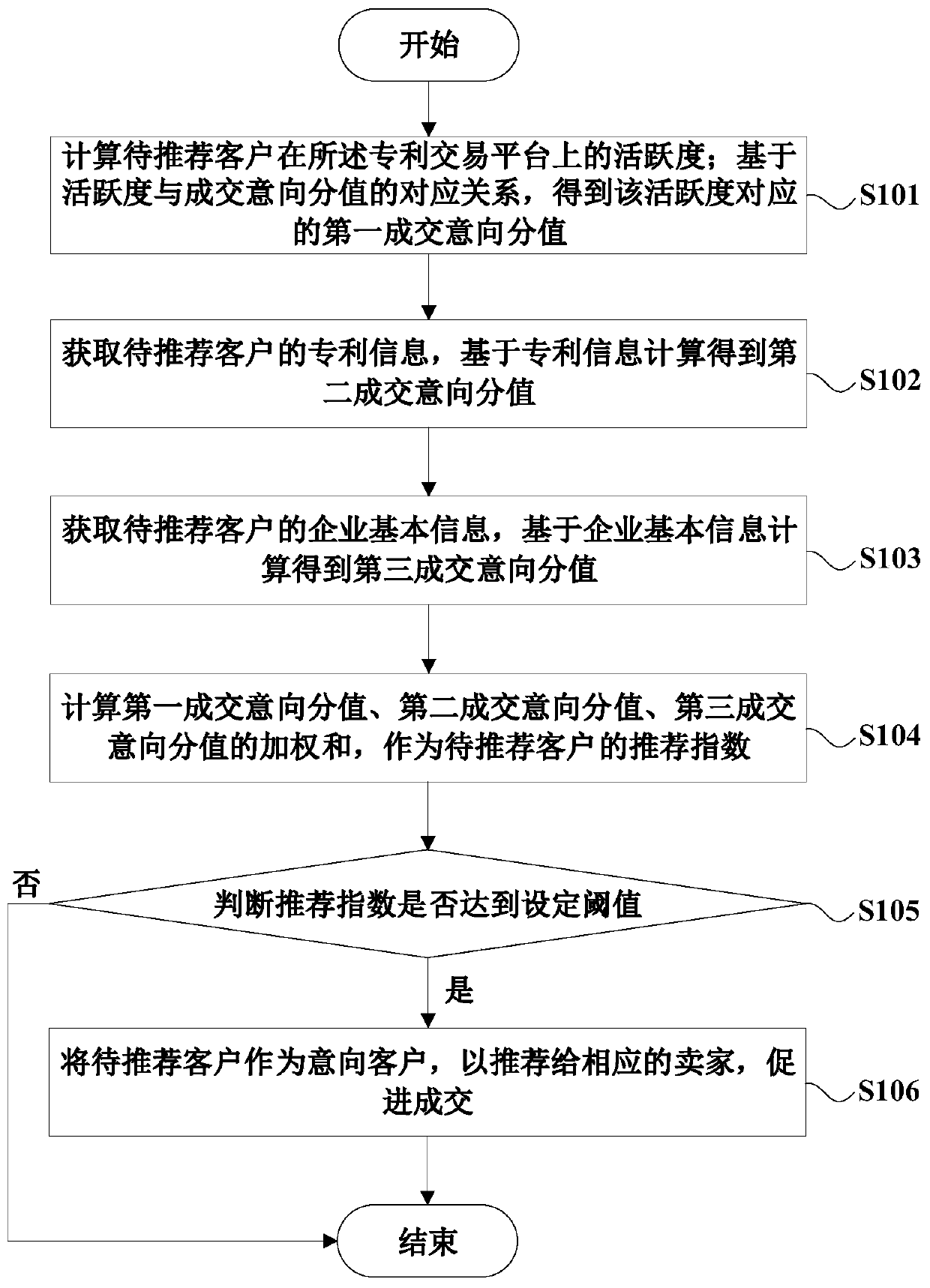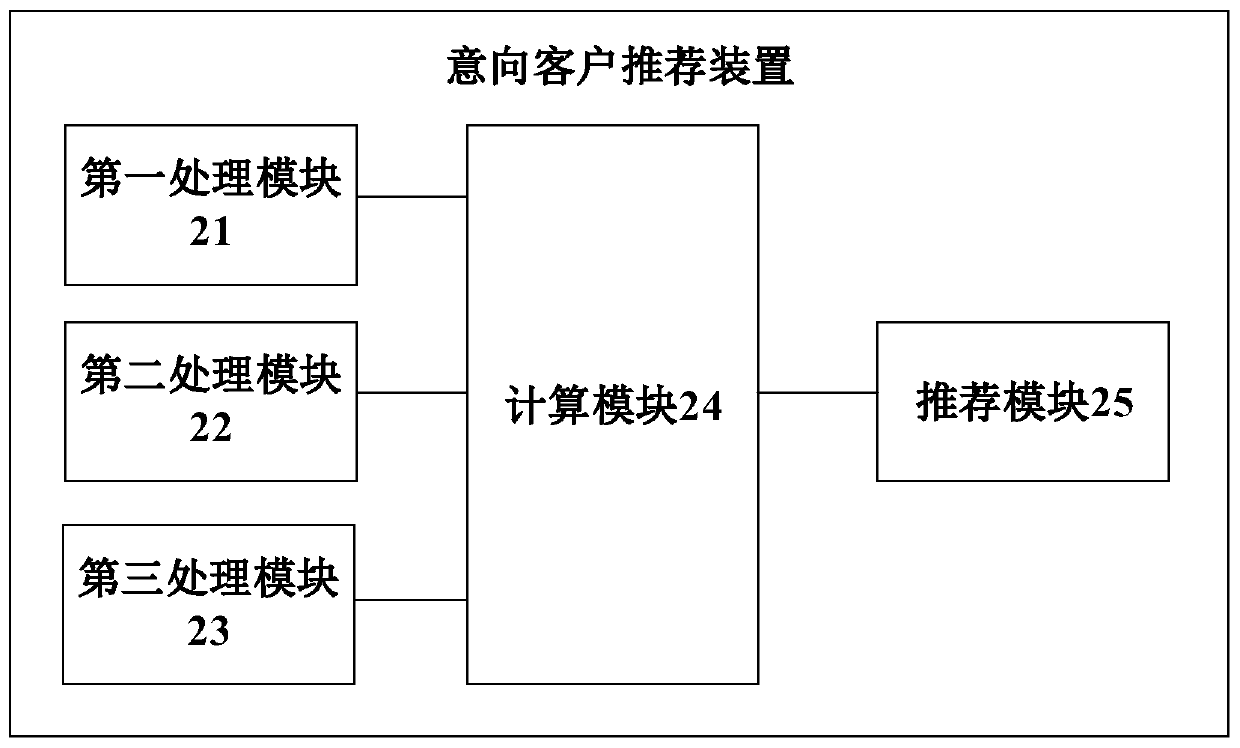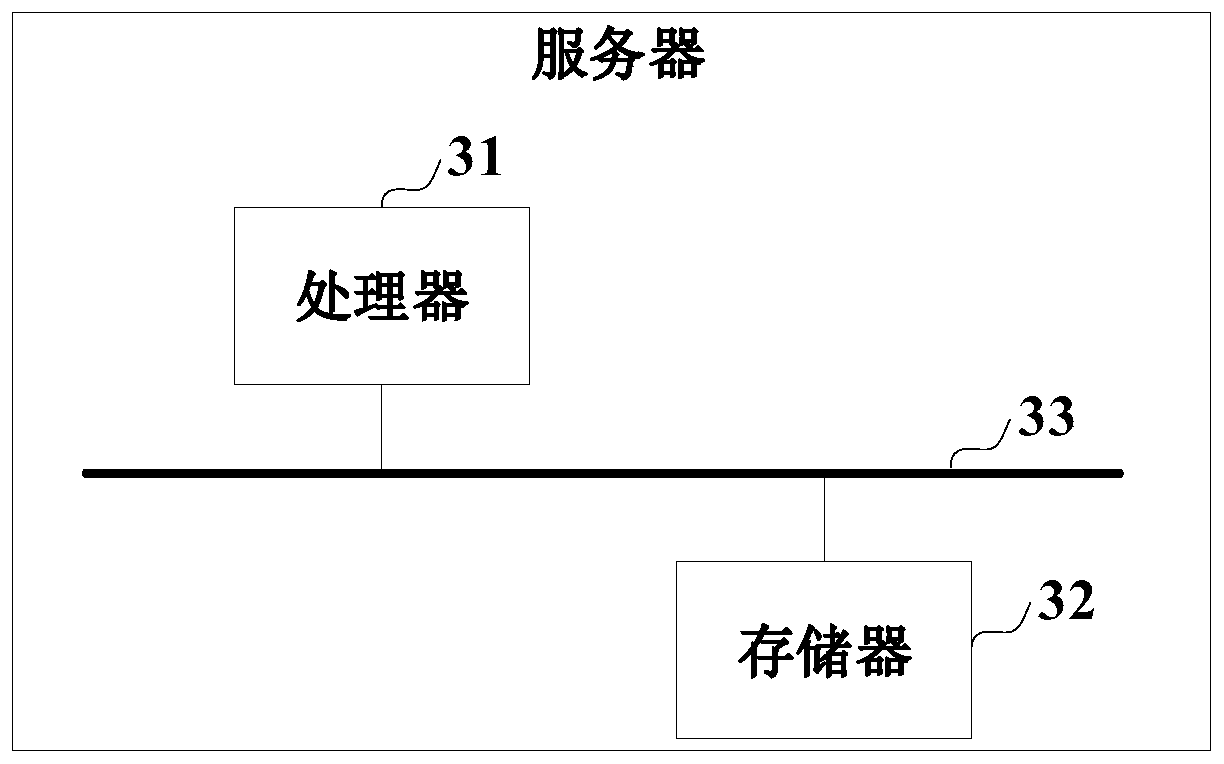Technical transfer intention customer accurate recommendation method and device and server
A technology of technology transfer and recommendation method, applied in the field of online trading platform, can solve problems such as spending a lot of time, unfavorable product sales efficiency, affecting user experience, etc., to achieve the effect of improving user experience and promoting patent transactions
- Summary
- Abstract
- Description
- Claims
- Application Information
AI Technical Summary
Problems solved by technology
Method used
Image
Examples
Embodiment 1
[0033] In order to realize the bridge between buyers and sellers and promote transactions, accurately recommend customers with strong purchase demand for technology transfer intentions to corresponding sellers, improve the efficiency of patent transactions, and allow buyers to buy in a better, more convenient and more efficient way. 1. For patents whose technologies meet their own needs, this embodiment provides a method for accurately recommending customers with technology transfer intentions, which is mainly applied to patent trading platforms to promote quick transactions between buyers and sellers of patents. By analyzing the activity of the customer to be recommended (equivalent to the buyer) on the patent trading platform, the patent information of the customer to be recommended and the basic information of the company, the recommendation index to be recommended is calculated, that is, the strength of the customer’s purchase intention; the recommendation index The higher ...
Embodiment 2
[0070] On the basis of the first embodiment above, this embodiment provides a device for accurately recommending customers with technology transfer intentions, which is mainly used to implement at least some steps of the method for accurately recommending customers with technology transfer intentions in the above embodiments. Please refer to figure 2 , the precise recommendation device for technology transfer intention customers mainly includes a first processing module 21, a second processing module 22, a third processing module 23, a calculation module 24 and a recommendation module 25, wherein:
[0071] The first processing module 21 is used to calculate the activeness of the customer to be recommended on the patent trading platform; based on the corresponding relationship between the activeness and the transaction intention score, the first transaction intention score corresponding to the activity is obtained.
[0072] Optionally, the first processing module 21 is used to ob...
Embodiment 3
[0079] On the basis of the first and / or second embodiments above, this embodiment provides a server that can be used to implement at least some of the steps of the method for accurately recommending customers with technology transfer intentions in the first embodiment above. Please refer to image 3 , the server mainly includes a processor 31, a memory 32 and a communication bus 33;
[0080] The communication bus 33 is used to realize connection and communication between the processor 31 and the memory 32;
[0081] The processor 31 is configured to execute one or more programs stored in the memory 32, so as to realize the steps of the method for accurately recommending customers with technology transfer intentions as described in Embodiment 1. For details, please refer to the description in the first embodiment above, and details are not repeated here.
[0082] Obviously, those skilled in the art should understand that each module or each step of the present invention can be ...
PUM
 Login to View More
Login to View More Abstract
Description
Claims
Application Information
 Login to View More
Login to View More - Generate Ideas
- Intellectual Property
- Life Sciences
- Materials
- Tech Scout
- Unparalleled Data Quality
- Higher Quality Content
- 60% Fewer Hallucinations
Browse by: Latest US Patents, China's latest patents, Technical Efficacy Thesaurus, Application Domain, Technology Topic, Popular Technical Reports.
© 2025 PatSnap. All rights reserved.Legal|Privacy policy|Modern Slavery Act Transparency Statement|Sitemap|About US| Contact US: help@patsnap.com



